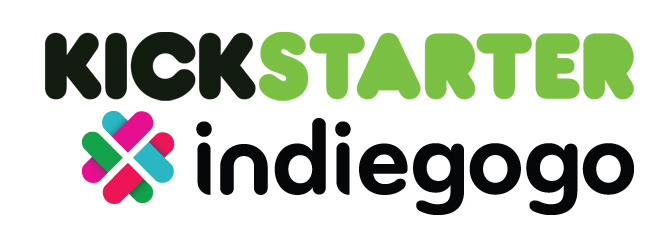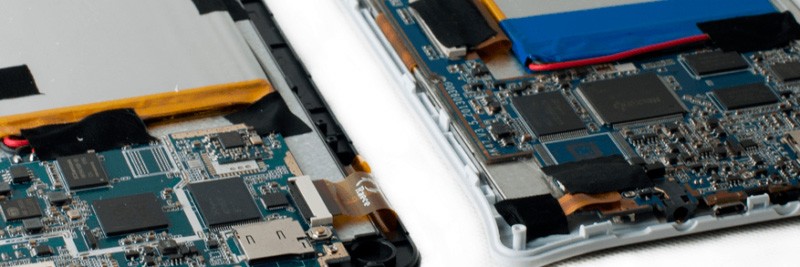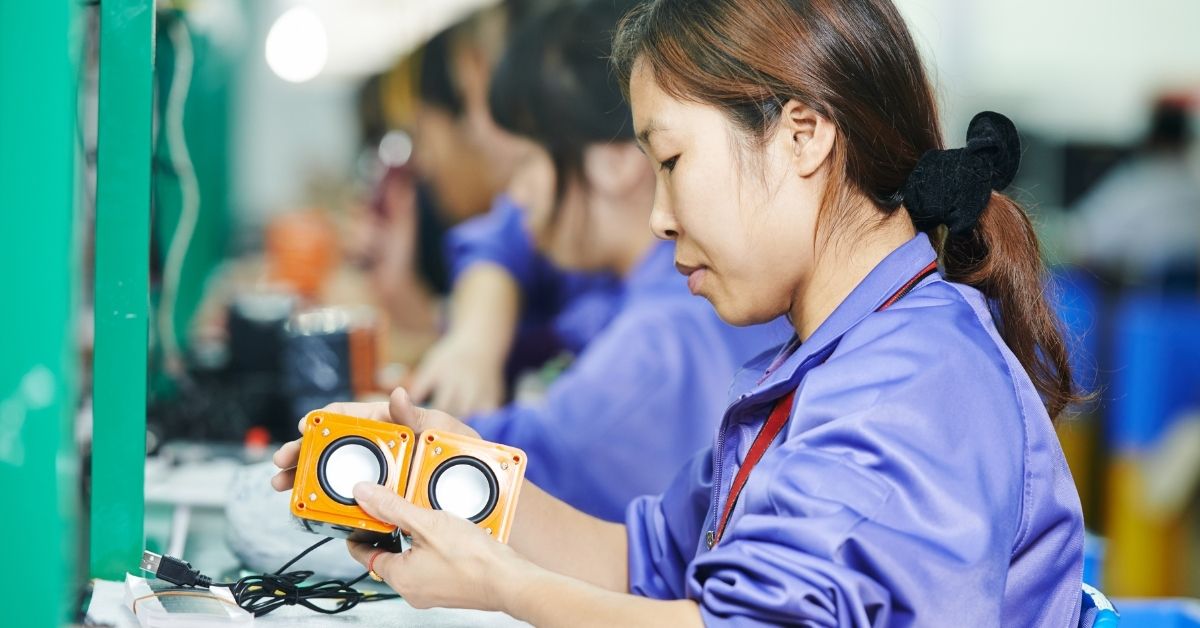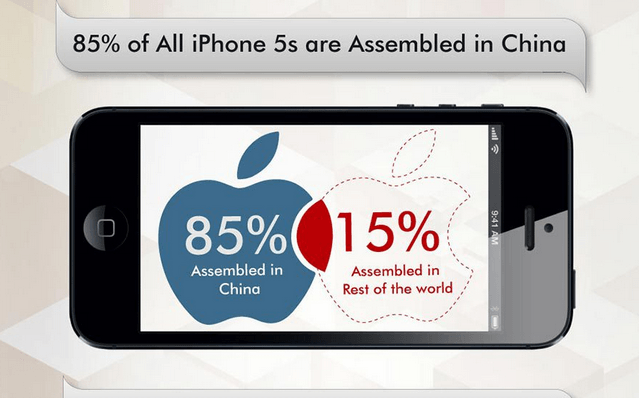One of the first questions a startup must consider is this: What is the special value of the product that you’re looking to build? Read our advice for startups to find out.
Continue readingHow to Manage Your RMA?
What’s an RMA? Discover how you can limit your financial loss from returned products through careful management of your RMA.
Continue readingWhere Do Mass Market Products Go to Die?
Want to know what happened to the MP3 player now that’s it’s not a mass-market product? Find out how popular mass-market products are reinvented when consumer demand dwindles.
Continue readingChinese Sweat Shops Shifting Into High-Tech Manufacturing
While it’s true that Chinese sweatshops with 15-hour work shifts still exist, more and more factories are shifting to high-tech manufacturing and better salaries. Find out why.
Continue readingShenzhen, Manufacturing Hub Of China
Shenzhen, the manufacturing hub of China, where companies go to make a fortune or lose millions. Learn the many advantages of establishing a business in this busy tech city.
Continue readingAre Smartwatches Only For Smart People?

This is a smart world. Everything we use has some kind of intelligence. This trend was kick started by the arrival of smartphones in the market, calling an end to both desktop computers and traditional phones.
If you really think about it, Smartwatches are a logical extension of Smartphones. Instead of lugging a big slab of material like a Smartphone around, you now have a sleek device strapped around your wrist smartly doing whatever it is supposed to do.
Frankly, a 5” screen just to view emails is a bit too big for any pocket. It doesn’t fit into the back pocket of my tight jeans nor can I carry it in my hand.
Smartwatch seems to be a valuable addition to my vast collection of devices and abracadabra. What should you then look for while buying a smartwatch?
Look and Feel
Smartwatches come in all shapes and sizes. Some are clunky and fat while others are just too feminine for my taste. I prefer something which is well ……smart looking.
Colors must go with your clothing. If you are the flashy kind, you can choose from a range of bright colors. For the sober kind, metallic grey and darker shades are available.
Overall, smartwatch should fit on your wrist without looking like a piece of rock.
Which Features Should You Look For In A Smartwatch?
The Smartwatch industry is at a stage of infancy. The software and firmware are unreliable and seem to be hurriedly put together. This is true even for big names such as Sony.
First off, your Smartwatch must be able to respond to voice commands. You should be able to activate your emails and notification without touching the watch.
Features from Google Glass would go well with a Smartwatch. Secondly, you should be able to use Android as well as iOS apps in the same device.
Though a standalone Smartwatch should be preferred, you must realize that a small and compact appliance cannot do everything. Presently most Smartwatches are merely an extension of smartphone.
As long as connectivity between a Smartphone and Smartwatch is seamless, you should not worry about this limitation. Bluetooth is the preferred technology for communication between the two.
A decent calendar with notifications, push emails and SMS, weather reports are some features which are bare minimum. Heart beat monitor with GPS and a stop watch would be a plus for sports buffs. For the socially connected, Facebook and Twitter notifications are essential.
The Future Of Smartwatch
Who knows, future Smartwatches may come with rocket thrusters which can place you into geostationary orbit in space. Certainly, days are not far when these devices can perform all that Smartphones do today and much more.
Wearability and ease of use should improve with time. The entry of big players like Google, Sony and Samsung into Smartwatches clearly indicates that the future of this device is bright and you can look forward to many interesting innovations.
From the business point of view, small players with big ideas can develop smarter watches and reap the benefits. You must remember that in this modern world only ideas matter – design, manufacturing and even distribution can be handled with ease.
Are Smartwatches are only for smart people? In fact it’s meant for folks like us – too smart but too lazy to pick up our Smartphones.
Should You Manufacture Your Smartphone In China?
This is an interesting subject to think about. Chinese goods are always looked upon with contempt.
They are cheap, unreliable and not meant for the American or European market. At least that’s the general opinion.
Obviously, Chinese smartphones just can’t compete with the greats like iPhone and even Samsung.
This is where you go wrong. Lately, there have been many Chinese smartphone manufacturers who have started competing head-on with big names.
Are Chinese Goods Made Of Poor Quality?
Did you know that 85% of iPhones are assembled in China?
If iPhones assembled in China can be of such high quality, there is no reason why other smartphone manufacturers cannot produce quality goods.
At the same time, it’s also true that most Chinese manufactured products are inferior. There are several reasons why there is such a variance in quality.
The foremost reason is quality control. Local Chinese manufacturers in their hurry to roll out their smartphones avoid or downright ignore quality control aspects.
This is a recipe for disaster. However, these enterprises justify their casual attitude claiming that the rock bottom cost of their devises compensates for the poor quality.
The consumer in China is also not bothered as long as the price is cheap. These manufacturers fail miserably when they try to sell in mature markets like US and Europe.
The quality of a product clearly depends on our attitude and emphasis. Choosing the right partner and manufacturer in China is critical to your success.
The second reason for churning out poor quality devices is the quality of components and raw material.
Sourcing the right components is an important factor in the overall quality of finished product. This aspect is tougher than it looks.
Discriminating between bad and good suppliers requires knowledge of the local market and environment.
There are many fly by wire operators who simply vanish after pocketing the advance. Chinese market is quite tricky and many US and European enterprises have burnt their hand here. You should therefore be extremely careful while choosing suppliers.
The third reason impacting quality is the actual manufacturing process. The factory facilities can make or break a product.
Seasoned outsourcing experts are aware of this fact and therefore choose manufacturing and assembly partners with extreme care.
Cost is sometimes a reason why some may turn to unknown Chinese manufacturers. This is not a good practice since culturally the locals are known to cut corners, eventually leading to sub-standard products.
The Culture Factor
More than anything else, you have to understand the culture and mindset of the local Chinese businessmen.
There is a tendency to make a killing from a single contract and there is a lack of long term commitment.
This psychological barrier has to be somehow breached if you want to produce quality products in China.
One way is to get US or European management to handle the manufacturing processes in China.
These professionals know the Chinese market well and can ensure that your product is manufactured using quality components and in a proper factory environment.
In the end, the cost incurred in engaging a professional unit can be easily justified and compensated by superior quality products.
This is an interesting subject to think about. Chinese goods are always looked upon with contempt.
They are cheap, unreliable and not meant for the American or European market. At least that’s the general opinion.
Obviously, Chinese smartphones just can’t compete with the greats like iPhone and even Samsung.
This is where you go wrong. Lately, there have been many Chinese smartphone manufacturers who have started competing head-on with big names.
Taking Hacker Space Mainstream

The Maker movement for do-it-yourself hardware has been growing since 2006, when the first Maker Faire expo was held for hardware hobbyists. It has gathered steam with the growth of open-source hardware and 3D printing. Now it has become a true mainstream movement, and one that could have profound effects on the manufacturing of products.
With crowdfunding platforms like Kickstarter, it is now possible for entrepreneurs to raise enough money in a campaign to complete hardware prototypes and do an initial run of manufacturing. But which platform is right for you? We’ve looked at some of the emerging platforms to see what kind of variety they offer.
Kickstarter has the advantage of being one of the biggest platforms. Since 2009, the crowdfunding platform has raised more than $1.14 billion for 63,056 successfully funded projects. About 43 percent of campaigns are successful, and many get so much attention that they can move on to receive venture capital funding. One of the primary successes was Oculus VR, which raised $2.4 million in 2012 on Kickstarter for its virtual reality goggles. It went on to be acquired by Facebook for $2 billion. Clearly, Kickstarter gave Oculus VR the visibility it needed, and it can be a very good indicator of the demand for a product.
But much of Kickstarter’s focus is in the U.S. Other platforms are more closely linked to manufacturing. With Highway 1, for instance, entrepreneurs can raise up to $50,000 to fund both a company and its first prototype.
You can work with Highway 1’s engineers for four months during an incubator program. You can get access to electrical engineering, mechanical engineering, and 3D printing labs. You can determine your sourcing and the factory you want to produce the product.
You can tour the factories that make the product, explore electronics markets, meet supply vendors and prepare to scale up. HIghway 1 has locations in both the U.S. (San Francisco) and China, and it offers both mentoring and business development support. It takes about 4 percent to 7 percent equity stake in a startup, and it helps set up a supply chain and do the manufacturing.
Highway 1 is a division of PCH International, a global supply chain company. Its aim is to help you take an idea from a napkin sketch to a worldwide retail product.
Haxlr8r is similar to Highway 1 in that it offers an accelerator program for people who like to hack hardware and make things. It offers $25,000 to $50,000 in funding, office space, and a 111-day incubator program in exchange for a 6 percent equity stake.
It provides mentorship and immersion in a startup community with like-minded entrepreneurs in both San Francisco and Shenzhen, China. Each week, participants meet with advisors that offer feedback on concepts and prototypes. The final two weeks of the program will be spent getting pitches together for a final pitch week in Silicon Valley. It helps set up a supply chain and also assists with finding venture capital through the pitching process. It offers a platform for development and does manufacturing setup in China. That includes help with invention, prototyping, sourcing, manufacturing, packaging, supply chain, strategy, marketing, distribution, fundraising, and financing.
Haxlr8r targets two to four-person startups.To date, it has launched 40 companies in the past two years. Many of those companies move on to launch their own Kickstarter crowdfunding campaigns.
And there is Quirky. With this platform, you submit your idea through the web site. Quirky takes 100 percent ownership of the product. But if it successfully makes the product and sells it, you get a perpetual royalty from sales.
You can look through the different ideas that are submitted and vote on the ones you love. The ones that get lots of votes rise to the top. You then help refine the idea, picking things like the color or helping to solve an engineering problem. It’s a collaborative process, with development, funding help, supply-chain setup, and a complete offloading of manufacturing.
Once the product is done, Quirky can manufacture it. It has its own 3D printing technology that it can use to make the initial product. Then it can take the product to a factory in China and manufacture the device in massive quantities and put it on retail shelves worldwide.
Quirky owns the intellectual property, so it takes on the responsibility of legally defending the product and its ownership rights. If all you have is an idea, then Quirky can supply all of the rest.
Hatch serves a complementary role to Haxlr8r, Kickstarter, or other companies trying to get their custom product made. With Hatch, Start-ups get a one-stop resource for development, manufacturing and overall management of what goes on in China. Plus Start-ups keep their equity and work with Hatch on development and manufacturing in either a hands on or hands off approach. Hatch provides direct access to development teams in China that can give fast and accurate feedback. Hatch also sorts out the supply chain and manufacturing, at its own manufacturing facility or one more suitable for your specific product, so you don’t have to manage that. And it can stick to schedules better than crowdfunding sources that don’t have solid ties to manufacturing.
As you can see, product inventors now have multiple choices for taking their ideas from conception through development, prototyping, and manufacturing, thanks to the services offered by multi-faceted crowdfunding and manufacturing services companies. You can bet that the result will be a flowing of innovation and small startup hardware manufacturing. And this should give the innovation economy a big boost, and it means that consumers will get more products that they really want, more quickly, and at cheaper prices, than ever before.
Hitting the Target

Once the development process starts there is limited flexibility for change because most changes require back tracking. Back tracking not only loses time, but often also ends up adding cost and demotivating the people involved with the development process. If a product concept isn’t fully defined it’s best to do very simple prototypes or renderings to help finalize the product concept before going into the formal development process.
Before starting any product development project it’s important to clearly define: 1) how the product looks (casing); 2) how the product works (firmware); 3) what hardware the product uses (components). These definitions are the final goals for the project, but setting smaller goals can help provide direction along the way to arrive at the final destination.
Why is it important to set goals? If nothing else goals act as a series of checkpoints to work towards that create direction and can be a means of measuring the progress of the project. More than anything though, goals help to constantly track, monitor and optimize your operations. The rewards of having focus driven by goal setting is invaluable to companies trying to bring a product to market within a limited amount of time. The benefits of doing this include reduced cost, quicker development, and better control over the product development process.
“Winners make a habit of manufacturing their own positive expectations in advance of the event.”
Brian Tracy
(Motivational speaker)
Crowdfunding for Hardware: What to Do After Crowdfunding
Windfall or Windfail
Many entrepreneurs are testing the waters of crowdfunding platforms such as Kickstarter and Indiegogo. The dream of leveraging a cash campaign enough to take a concept to the consumer is trending, and trending hard, in startups around the world. Why is it then that so few of the many successful campaigns end up mismanaging their windfall into a windfail?

The obvious answer is that an idea is neither a business nor is it a product, and to many startups, establishing a business coupled with the obligation of having a pile of cash, orders to fill and backers to satisfy seems an impossible task to manage. However, by understanding the sea of issues that can arise and the available manufacturing options, startups can avoid catastrophic failure and get ahead of the game by making a plan and providing solutions to their manufacturing needs.
“An estimated 75% of all tech and design projects are delivered late”
Not to mention the countless other projects that never get off the ground. The learning curve for understanding international shipping regulations, multi-source manufacturing and other aspects of a global supply chain is but a few hurdles a product must face and bound before making its way to the store shelf. However, the common denominator for every issue a company not only can but will face is…cost.
Understanding how much money it will actually cost you to find overseas partners for all aspects of your supply chain is a large scale miscalculation that small scale startups cannot usually afford to make. How is it then that Kickstarters, IndieGoGo’s and thirsty techies can deliver their products?
The answer is simple, manufacturing. Manufacturing consists of many different routes, options, methods, and plans. However, once a successful campaign chooses a direction, whether it be licensing, sourcing or building their own factory their cost can become quite clear.
Can you afford this?
Minimum order can easily be between 50,000 to 100,000 units in order to get a factory to commit. Let’s just assume you are looking for a prototype so that you can license your idea and reap the rewards of royalties…what did you just say?
A factory is going to need to make an initial mold, purchase raw materials and pay labor and this is even before you can secure product protection through a license. You could always go the multi-source route and work with specialized partners from all aspects of the manufacturing realm; this, of course, is for the bold and ambitious entrepreneurs seeking massive gains from their revolutionary new product.
Seek out a design house, engineers and developers. You can even organize casting, casing and quality control if you like, but understand that dealing directly with these organizations is going to require contracts, negotiations, trips abroad and will be chalked full of expensive misunderstandings. Are you crazy? You could pledge to buy or build your own factory…That is of course what a large scale operation would do, isn’t it?
According to Dan Harris over at Chinalawblog.com; buying or building your own factory, specifically in China, is a huge mistake. The costs of registering an enterprise in China alone could easily exhaust all of your precious startup capital and is a task not to be taken lightly, even by large scale tech companies. If all of this is true, then how could it be profitable to bring your small idea to the big stage?
Find someone to do it for you, while maintaining control over the manufacturing process and your product.
There will undoubtedly be many different components to your supply chain, and you can be certain that one of your many suppliers will ask you if you would like them to coordinate all of your supplier relationships on your behalf. They will offer extensive services and working relationships with any and all parties that could be involved in the manufacturing of your product.
The goal here is to exploit global efficiencies and cut into your operating expenses; all the while maintaining the integrity of your product, most importantly, the quality. Your best option is to look for a company who has checked in all of the right boxes.
Manufacturing is about managing your supply chain and you need to find someone who has experience in global and multi-sourcing. A company with active relationships alongside manufacturers, suppliers and who offers volumes in the industry track record. Finding a complete supply chain solution with experience communicating and working with specialized suppliers on a multi-source platform can help turn your campaign into the cash cow you have been dreaming of.
Yours truly, Ben Dolgin-Gardner, Hatch founder and Manufacturing Solution Expert










